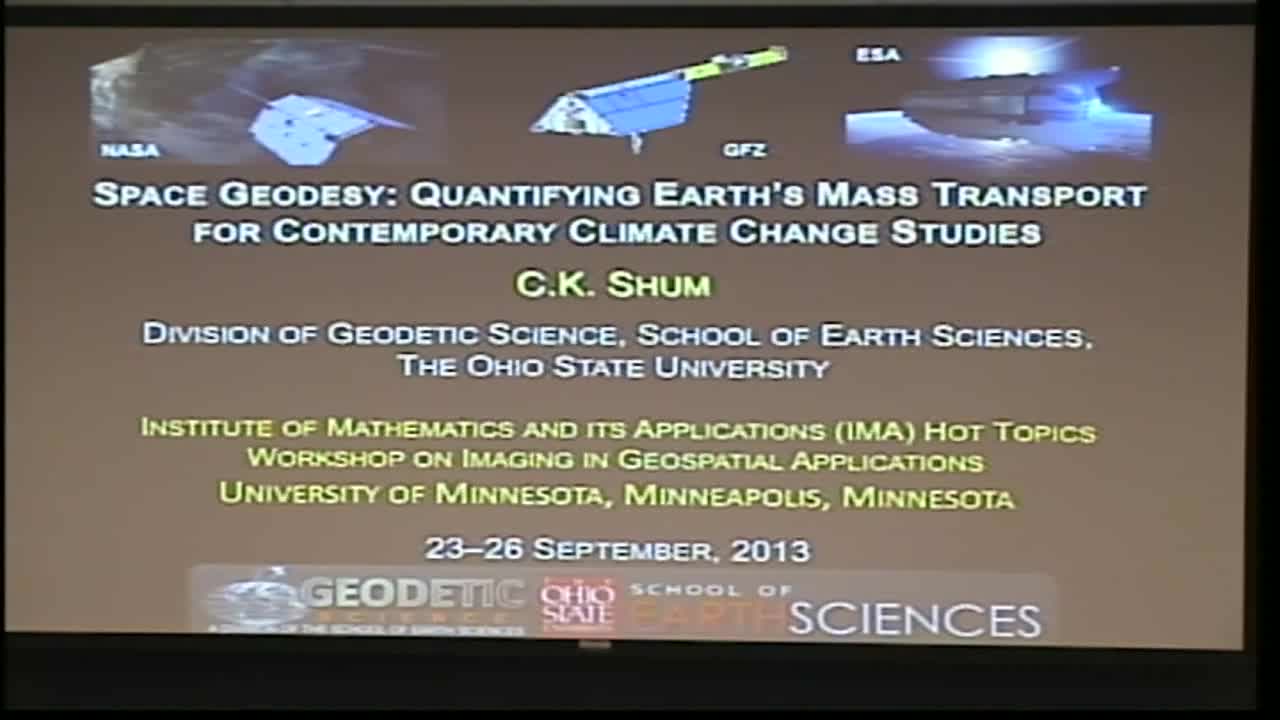Space Geodesy: Quantifying Earth's Mass Transport for Contemporary Climate Change Studies
Presenter
September 24, 2013
Keywords:
- Geodesy
MSC:
- 86A30
Abstract
The complicated dynamic processes of the Earth system manifest
themselves in the form of mass transports, for example resulting from
interactions and feedbacks between the solid Earth and its fluid
layers, including ocean, atmosphere, cryosphere and hydrosphere. These
mass transport signals, covering a wide range of temporal and spatial
signals and could originate from natural and anthropogenic climate
change processes are observable via contemporary space geodetic
sensors. These signals are identified to be critical towards addresses
contemporary outstanding scientific questions, including the causes of
global sea-level rise, quantifying ice-sheet and glacier mass balance,
studying basin-scale hydrology and global water cycle, better
understanding of coseismic deformation and geodynamic processes such
as the glacial isostatic adjustment. Space geodesy during the onset of
the 21st Century is evolving into a transformative cross-disciplinary
Earth science discipline. In particular, advances in the measurement
of the gravity with modern free-fall methods reached accuracies of
10-9 g (~1 microGal or 10 nm/s2), allowing accurate measurements of
height changes at ~3 mm relative to the Earth’s center of mass, and
mass transports within the Earth interior or its geophysical fluids,
enabling a possible global quantification of climate-change signals.
The fundamental mathematical tools to efficiently and accurately
exploit and process the big satellite geodetic and remote sensing data
sets require addressing fundamental mathematical techniques including
boundary value problem, potential theory, adjustment, precision orbit
determination, radar physics, and scalable distributed computational
algorithms. This presentation summarizes results from the use of data
from space gravimetry satellite mission GRACE (Gravity Recovery And
Climate Experiment) and other geodetic sensors including satellite
altimetry and synthetic aperture radar interferometry (InSAR), to
study contemporary scientific problems such as observing and
quantifying the causes of 20th and present-day sea-level rise, Earths’
ice and water reservoir mass fluxes, and applications such as timely
monitoring of natural hazards such as floods, quantifying world’s
water resources, and addressing coastal vulnerability due to sea-level
rise.
